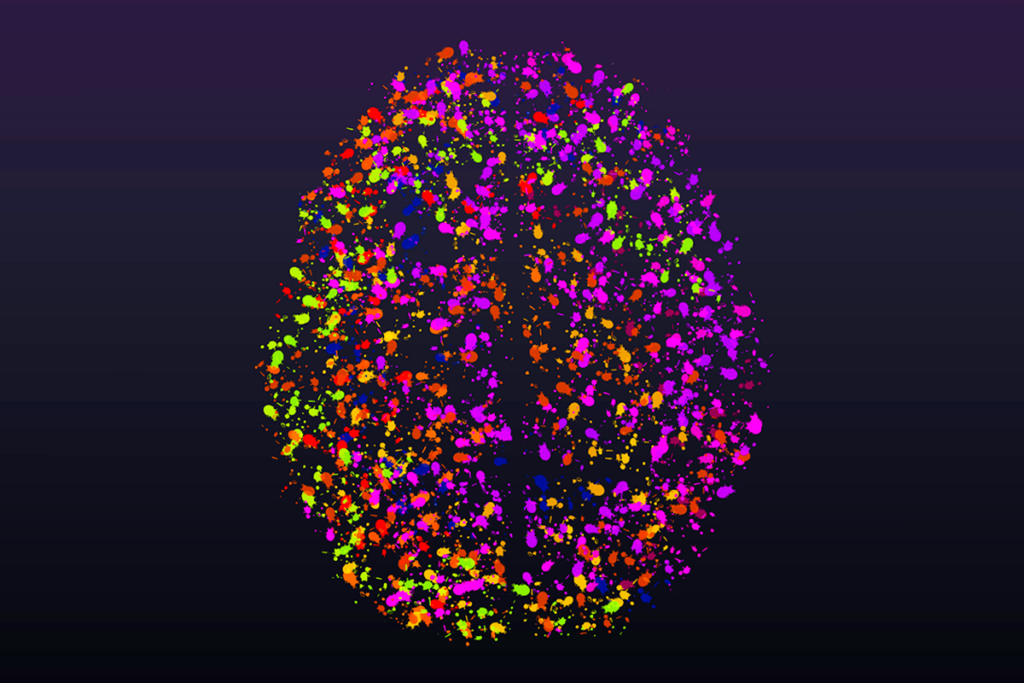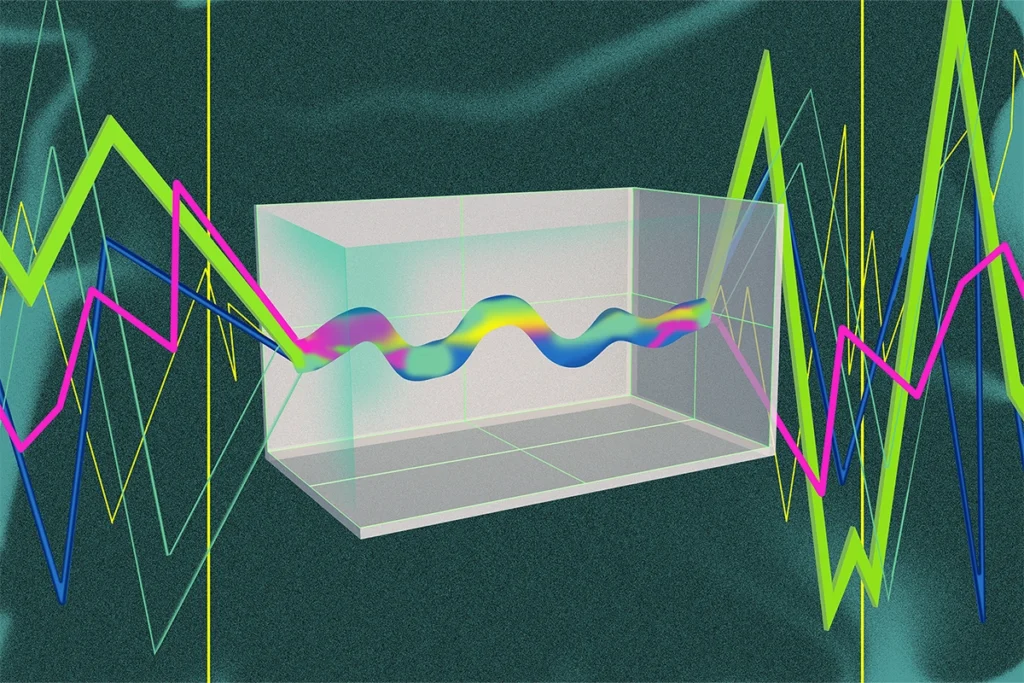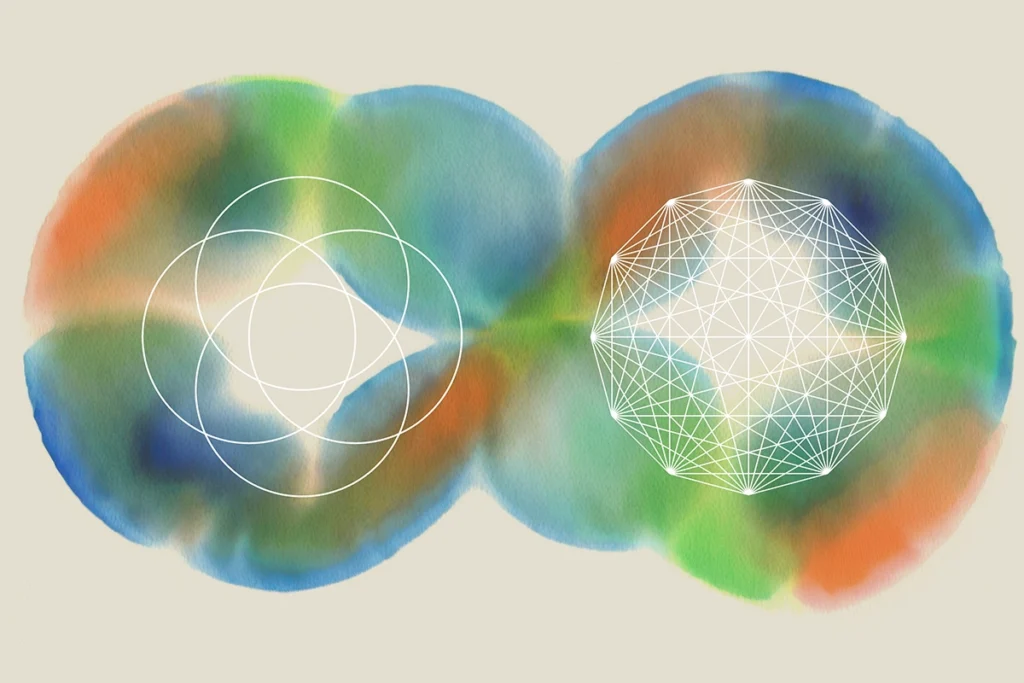To say that the brain is a communication device is almost cliché. The very name of this publication—The Transmitter—testifies to the ubiquity of the analogy. Yet most models of the brain take a sharply limited view of what communication in the brain really entails.
Though couched in terms of networks and information, current approaches in systems neuroscience tend to view the brain from the point of view of the neuron. Models mainly focus on what single neurons and collections of neurons “represent.” This strategy has been successful. In taking the neuron’s perspective, we have learned a tremendous amount about how features of the world and body can be encoded in the spiking activity of individual brain cells. The theory of how neurons represent information continues to advance with the help of deep-learning models, which equate neuronal firing with the activation of nodes in an artificial neural network.
But in taking the neuron’s perspective, we have mostly ignored the importance of messages, which are the basis of all types of communication over networks. By “messages,” I refer not to individual spikes but rather to patterns of excitations—comprising spikes, their timing and their spread across the wider network. Because the neuron viewpoint is static and local, it is mostly blind to how such messages flow over multiple “hops,” or synapses. Although much is unknown about how brain networks exchange information, an important first step is to look at things from the point of view of messages themselves.
T
here is now significant support—from single-neuron recordings, human brain imaging and computational simulations—for the notion that discrete messages travel from neuron to neuron and can take different routes across the network at different times.In 1999, researchers in György Buszáki’s lab, led by Zoltan Nádasdy, showed some of the first evidence that coherent messages travel over multiple hops in the brain. Nádasdy and his colleagues recorded spiking patterns in neurons in the rat hippocampus during sleep and wheel-running. But unlike in most studies of hippocampal neurons, the goal was not to determine what each cell “liked”: Rather than investigating what specific stimulus or behavior triggered a neuron’s responses, the team treated the spiking patterns as messages and investigated how these messages traveled between neurons.
Nádasdy and his colleagues found that message fingerprints—namely spiking patterns—showed up in specific neurons in a specific order, again and again. For example, a given fingerprint could be reliably found in neuron 1, then in neuron 4, and then in neuron 3. A different fingerprint would jump from neuron 1 to neuron 2 to neuron 4. In total, they identified more than 50 different fingerprint sequences when the animal was running. Message sequences also differed during sleep. Though the researchers could not measure how or if the neurons were connected to each other, they showed that the appearance of message fingerprints in different neurons was unlikely to have arisen by chance.
Others, including Artur Luczak and his colleagues, have since found evidence for traveling messages by using different methodologies in other brain areas. Researchers have also traced how messages travel across brain networks by injecting distinctive, high voltage pulses into one brain location and seeing where else in the brain those signals show up.
Despite these glimpses over the past 25 years, we are still just beginning to understand how messages propagate in the brain. Part of the issue is that tracking brain signals over multiple synapses—or through single cortical white-matter tracts—remains somewhere between difficult and impossible. But lack of a theoretical framework is also a problem: We don’t yet have an accepted definition of what constitutes a message. It could be composed of a specific timing pattern of spikes that is maintained from neuron to neuron, as Nádasdy and his colleagues assumed. Alternatively, or in addition, it could be conveyed by synchronous activity among neurons or groups of neurons. The physical basis of traveling messages could be something else not yet imagined.
Simply shifting our viewpoint may help address these issues by spurring innovation in experimental methods. And even if we don’t yet know what a message is “made of,” taking the message’s point of view can help us ask new questions: Do messages take specific paths between senders and receivers in the brain? If so, do they take many parallel paths or just one path? Or are messages broadcast out to all neurons in earshot? To what extent do messages compete or cooperate with one another as they travel? And how is message congestion managed?
T
he fly connectome offers a glimpse of what we can learn from this change in viewpoint. In October 2024, Sven Dorkenwald and his colleagues in the FlyWire consortium released a complete map showing how every neuron in the fruit fly brain is connected to every other neuron. This resource will be useful in many ways, but it is especially important for realistic modeling of how messages flow across an entire brain. Indeed, Dorkenwald and his colleagues explicitly tried to model this very thing.The researchers deployed a model that simulates how messages are propagated across the whole network. Messages are set loose from neurons in each sensory modality in turn—eyes, olfactory sensors and so on—and then hop to neurons connected to those sensory neurons, preferentially traveling to neurons that have the most incoming links from the sensory neurons. The same process then repeats, with messages again preferring to jump to common downstream neighbors. This means that messages reinforce each other as they travel. For a message to travel to a new neuron, it helps if other messages can jump there too. What’s important here is that Dorkenwald and his colleagues are not just taking the map of the network at face value but rather using connectivity and a plausible routing model to infer how messages flow through the network.
In a companion paper, Albert Lin and his colleagues showed that, on average, neurons in the fly brain are about four synapses away from each other. This is a remarkable discovery on its own. With so many possible routes between any pair of neurons—and so many potential points where messages could interact with each other—there must be routing systems in the brain to effectively manage message flow.
But just because there is a path connecting two neurons doesn’t necessarily mean they communicate with each other. Tracking messages in a flow model, like the one used by Dorkenwald and his colleagues, provides stronger evidence that signals actually travel between neurons. In their simulations, the researchers found that “almost every neuron in the central brain can be reached by starting from any [sensory] modality.”
The Dorkenwald model is just one of many possible ways of modeling message flow. Nevertheless, this work represents important progress toward understanding communication in brain networks, in part because it looks beyond the neuron’s point of view.
The message, as it were, is starting to get through.





